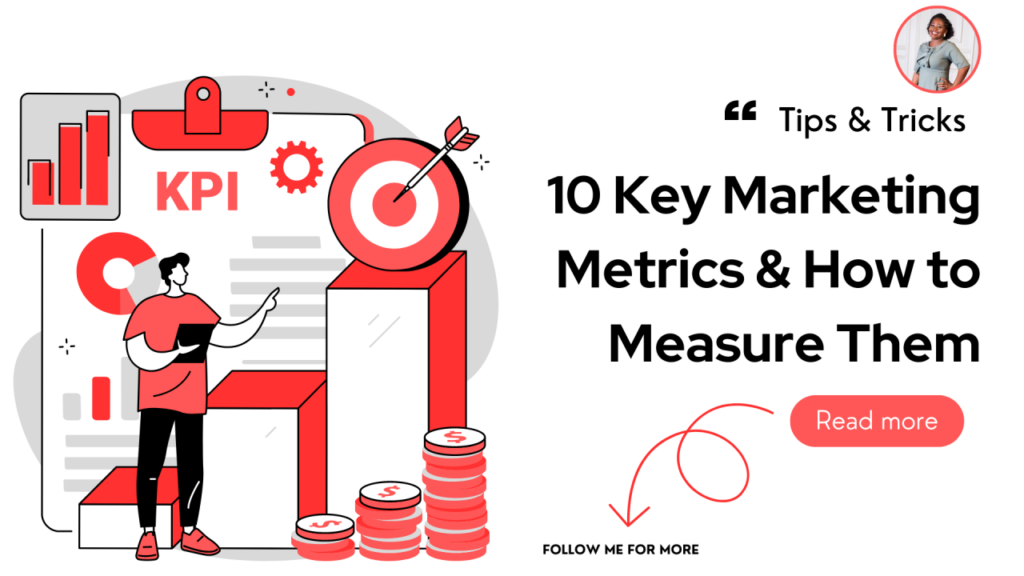Key Metrics to Track in Marketing Analytics
In the realm of digital marketing, success isn’t just about executing campaigns—it’s about understanding what works and refining strategies based on data-driven insights. Key metrics play a pivotal role in measuring the effectiveness of your marketing efforts, guiding decision-making, and optimizing performance for maximum impact. Whether you’re a seasoned marketer or just diving into analytics, mastering these key metrics is essential for driving growth and achieving your business objectives. Here’s a comprehensive guide to the essential metrics every marketer should track:

1. Website Traffic
Website traffic is a fundamental metric that indicates the volume of visitors landing on your website. It provides insights into the reach and visibility of your marketing efforts. Monitor total traffic, as well as traffic sources (organic search, social media, referrals, etc.), to understand where your audience is coming from and which channels drive the most visitors to your site.
2. Conversion Rate
Conversion rate measures the percentage of visitors who complete a desired action, such as making a purchase, signing up for a newsletter, or downloading a resource. It helps evaluate the effectiveness of your website and marketing campaigns in converting visitors into leads or customers. Track conversion rates across different channels and campaigns to identify high-performing strategies and areas for improvement.
3. Cost Per Acquisition (CPA)
CPA calculates the average cost incurred to acquire a new customer or lead. By dividing total campaign costs by the number of conversions generated, you can assess the efficiency and profitability of your marketing initiatives. Lowering CPA through targeted campaigns, optimized landing pages, and effective ad spend allocation can improve overall marketing ROI.
4. Return on Investment (ROI)
ROI measures the profitability of your marketing campaigns by comparing the revenue generated against the costs incurred. A positive ROI indicates that your campaigns are generating more revenue than the amount spent, while a negative ROI suggests inefficiencies that require adjustment. Regularly assess ROI across campaigns to allocate budgets wisely and prioritize strategies that yield the highest returns.
5. Customer Lifetime Value (CLV)
CLV estimates the total revenue a customer is expected to generate throughout their relationship with your business. It helps determine the long-term value of acquiring and retaining customers. By understanding CLV, you can allocate resources effectively to attract high-value customers, improve retention strategies, and enhance overall customer satisfaction and loyalty.
6. Click-Through Rate (CTR)
CTR measures the percentage of people who click on a specific link or ad compared to the total number of people who viewed it. It assesses the effectiveness of your call-to-action (CTA) and ad copy in capturing audience interest and driving engagement. Optimize CTR by testing different ad creatives, refining CTAs, and targeting relevant audience segments to maximize campaign performance.
7. Bounce Rate
Bounce rate indicates the percentage of visitors who navigate away from your website after viewing only one page. A high bounce rate may indicate that visitors are not finding the information they expected or that your site needs improvements in usability or content relevance. Monitor bounce rates by page and device to identify areas for optimization and enhance user experience.
8. Social Media Engagement
Engagement metrics on social media platforms (likes, comments, shares, etc.) measure audience interaction with your content. Analyze engagement rates to gauge content relevance, audience interest, and overall brand affinity. Tailor your social media strategy based on these insights to foster community engagement, increase brand visibility, and drive meaningful interactions with your audience.
9. Email Marketing Metrics
For email campaigns, track metrics such as open rates, click-through rates, and unsubscribe rates to evaluate campaign performance and audience engagement. Analyze email metrics to refine segmentation, personalize content, and optimize send times for maximum impact. Effective email marketing metrics provide valuable insights into audience preferences and behavior, guiding ongoing campaign optimization.
10. SEO Performance
Monitor SEO metrics such as keyword rankings, organic traffic, and backlink profile to assess the effectiveness of your search engine optimization efforts. Track improvements in search visibility, website authority, and organic search traffic to optimize content, target relevant keywords, and enhance overall SEO performance. Regular SEO analysis helps maintain competitive rankings and attract qualified traffic to your site.
Conclusion
By monitoring and analyzing these key metrics regularly, marketers can gain valuable insights into campaign performance, audience behavior, and ROI. Data-driven decision-making enables optimization of marketing strategies, allocation of resources effectively, and continuous improvement to achieve business goals. Stay proactive in leveraging analytics tools and platforms to stay ahead in the competitive landscape of digital marketing. Watch this space for more insights and actionable tips to elevate your marketing analytics prowess and drive sustained growth for your business.


